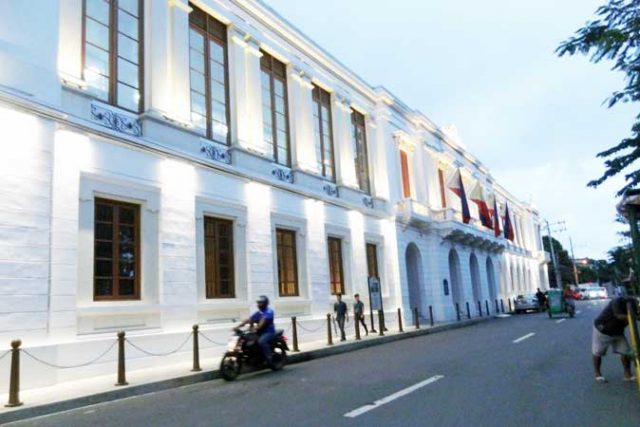Beyond number crunching: Making accounting matter in the new normal
 By Marivic C. Españo
By Marivic C. Españo
P&A Grant Thornton Chairperson and CEO
For many years now, innovation has been revolutionizing the accounting profession and expanded the role of accountants. Modern technology has led to significant improvements in accounting software, platforms for mobile accounting, and cloud-based systems. This not only make accountants more accurate and thorough in their craft, it also enables them to go beyond number crunching and add more value to their clients’ business.
While these innovations have been available to accountants for quite some time now, not all made the digital pivot. Some local businesses were still using programs and systems that required their accountant to be in-person and on-site to do manual tasks. This proved to be a challenge when the COVID-19 global pandemic led to the enforcement of strict lockdowns and social distancing protocols. All the data and paper-based files suddenly became completely inaccessible, and business owners and accountants had to work from home for health and safety reasons.
The pandemic demanded swift action and for businesses to keep their lights on. To meet the challenge of a constantly evolving business landscape, companies were forced to embrace digital transformation. Some of these digital initiatives include enabling remote work, providing high-capacity laptops and tools for the workforce, shifting to cloud-based technology, and giving staff training in cybersecurity. A number of firms also provided clients easy access to information through digital portals, making communication between auditors and clients more convenient.
Addressing challenges
As the pandemic is ongoing and health and safety protocols are still in place, these digital transformation initiatives are rapidly gaining wider acceptance and forming part of the “new normal” in Philippine accounting. Artificial intelligence, automation, and data analytics are also playing a huge role in enabling accountants to become more efficient by eliminating the need for leg work.
Digitalization has also changed client relations and onboarding. With firms doing away with face-to-face meetings, communication channels such as video call platforms, livestreaming, and email marketing tools have become a must-have in client relations. These tools are used to introduce advisory content, from awareness building and tax and accounting alerts, to new regulatory issuances and financial training.

If there is one certainty in the pandemic and beyond, it is that digitalization is here to stay, as it becomes part of standard accounting processes — from online client onboarding to cloud-based project management and electronic submission of regulatory requirements. As such, the accountant has to adapt to meet the challenges post-pandemic.
The Philippine accounting industry is also addressing issues brought about by new laws and regulations. The recent passage into law of the Corporate Recovery and Tax Incentives for Enterprises (CREATE) Act paved the way for adjustments in tax practice, as it contains provisions which will affect the 2020 income tax payable of most corporations. The new law affects the corporate income tax (CIT) rates of domestic corporations and resident foreign corporations and those of proprietary educational institutions, hospitals, and nonresident foreign corporations. The new law will also have an impact on minimum corporate income tax (MCIT) and percentage tax.
With the introduction of changes in rates effective July 1, 2020, tax professionals will have to compute their clients’ corporate income tax payable differently. The current Tax Code already prescribes the rules on how to compute income tax if there has been a change in rates — taxable income will be computed regardless of the date when specific sales, purchases, and other transactions occur. The income and expenses for the fiscal year shall be deemed to have been earned and spent equally for each month of the period.
These regulatory changes will bring about more detailed exchanges between firms and their clients and routine tasks will be disrupted to make way for the new CIT adjustments.
Accounting beyond the new normal
At P&A Grant Thornton, we view our clients’ needs beyond the context of the pandemic. Since the Firm started in 1988 as Punongbayan & Araullo, we have always gone beyond and above our traditional role and standards to deliver quality service that is personal, agile, and proactive. We have deep insights into global industries and markets, thanks to our alliance with Grant Thornton, which has a global network of member firms across 130 countries. With these connections, we combine global scale and capability tailored to the Philippine landscape.
 Even amidst the pandemic, most of our staff were working from home, we continued to enable our clients’ business continuity and meet the demands of their dynamic operating environment through our digital innovations.
Even amidst the pandemic, most of our staff were working from home, we continued to enable our clients’ business continuity and meet the demands of their dynamic operating environment through our digital innovations.
Through our Client Portal, clients can receive direct, real-time notifications on the status of their engagement and billings. This also allows them to track new business insights, as well as accounting and tax alerts released by government regulators.
P&A Grant Thornton is also offering its Vigil@nt training platform to help clients educate their staff on best practices to protect sensitive client information, with cybersecurity threats becoming more rampant during the pandemic.
The Firm has also been holding webinars and has ventured into the education technology (edutech) space through GT Academy X. Clients interested in offering digital learning and development programs partner with us for GT Academy X, which we are also bringing to other GT partners in the region.
Going beyond clients’ expectations forces us to take on a new mindset and embark on innovations. We meticulously train our teams in client management, prioritize work-life balance, and schedule educational webinars to constantly keep our staff abreast of developments and raise the bar in the accounting industry. Going beyond also means humanizing the accounting process and thinking outside the box to offer even more relevant and targeted solutions.
With this go-beyond mindset in place, our clients can expect to receive quality service, fresh perspectives and practical solutions, enabled by technology, through a more agile and proactive approach.















